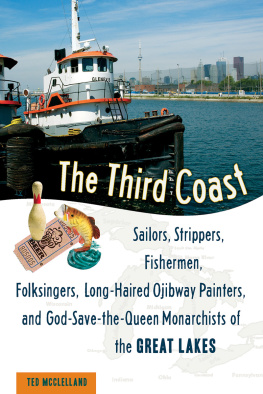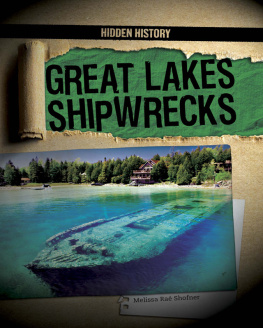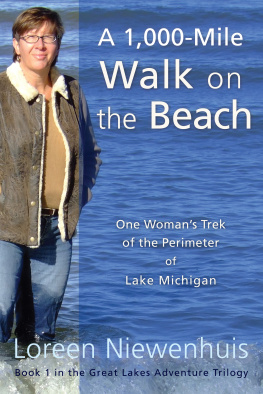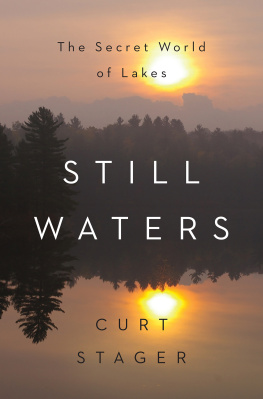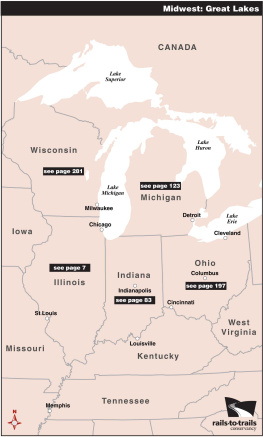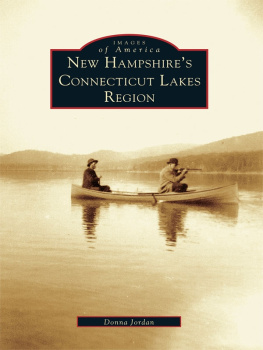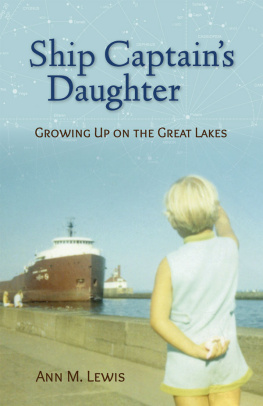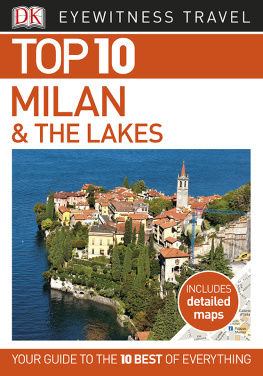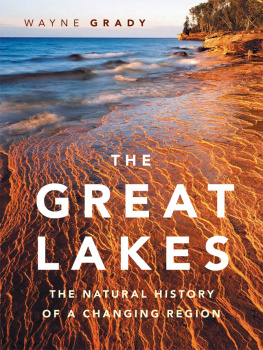

Library of Congress Cataloging-in-Publication Data
McClelland, Ted.
The Third coast : sailors, strippers, fishermen, folksingers, long-haired Ojibway painters, and God-save-the-Queen monarchists of the Great Lakes / Ted McClelland.1st ed.
p. cm.
ISBN-13: 978-1-55652-721-0
ISBN-10: 1-55652-721-7
1. Great Lakes Region (North America)Description and travel. 2. McClelland, TedTravelGreat Lakes Region. 3. Great Lakes Region (North America)Social life and customs. 4. Great Lakes Region (North America)BiographyAnecdotes. 5. Great Lakes Region (North America)History, Local. 6. Lake StatesHistory, Local. 7. OntarioHistory, Local. I. Title.
F551. M38 2008
917. 704dc22
2007027101
www.tedmcclelland.com
Some of the material in this book was originally published in
Gapers Block, the Chicago Reader, True North, and Stop Smiling.
Interior design: Jonathan Hahn
Interior images courtesy of the author
Great Lakes map on page xand endpapers from Lake Michigan
by Milo M. Quaife (The Bobbs-Merrill Company, 1944)
2008 Edward McClelland
All rights reserved
First edition
Published by Chicago Review Press, Incorporated
814 North Franklin Street
Chicago, Illinois 60610
ISBN: 978-1-55652-721-0
Printed in the United States of America
5 4 3 2 1
To my parents, Robert J. and Gail A. Kleine
Contents
Acknowledgments
F irst and foremost, I want to thank Bill and Bonnie Rossberger, owners of 7726 North Eastlake Terrace, the Chicago six-flat where I wrote this book. Bill grew up near Lake Michigan, building his first (unseaworthy) boat at age ten. As a young man, he dreamed of living on Eastlake Terrace, which is closer to the lake than any street in Chicago, and owning a sailboat. He did both, even becoming commodore of the Chicago Corinthian Yacht Club. Bill also had a successful career as a salesman for Ryerson Steel, a subsidiary of Inland Steel, which built the Joseph L. Block. Our living room windows overlooked the water. I set up a table in front of mine, so I could look at the lake as I wrote. Bill set up a telescope in front of his, to watch passing freighters. I look out on that lake every day, he told me. It gets into your spirit. Living in Bills building, I absorbed his love of the lake. Its one of the reasons I wrote The Third Coast.
Also in Chicago, I want to thank Rod Sellers, my guide to the East Side, and Ben Joravsky, who gave me a primer on lakefront liberals and the history of Lake View. Andrew Huff, publisher of the Web site Gapers Block, ran monthly installments from this book when it was a work in progress. Alison True of the Chicago Reader, J. C. Gabel of Stop Smiling, and Keith Gave of True North also ran excerpts.
Its not easy to leave home for three and a half months. David R. Kazak and his wife, Kristin, looked after my dog when I was on the road. Kathleen Schmidt took in my cat, and Eric Bremer sublet my apartment. Jennifer Leslie let me borrow her tent.
Cynthia Sherry at Chicago Review Press gave me the quickest green light in the history of publishing. I hadnt even finished the first sentence of my pitch when she said, Thats a great idea.
Most of those who helped me with this journey are mentioned in the book, but Id like to give special thanks to Mitch Gerber, Buffalonian-in-exile, who provided me with several introductions there, and proofread the upstate New York chapters.
For their early confidence, Id like to thank the late Professor Stephen Dunning of the University of Michigan, as well as three editors: Kathryn Olney and David Beers of Mother Jones, who encouraged me to write about the Midwest, and Richard L. Manugian, who told me, simply, Youll write books. This is one.
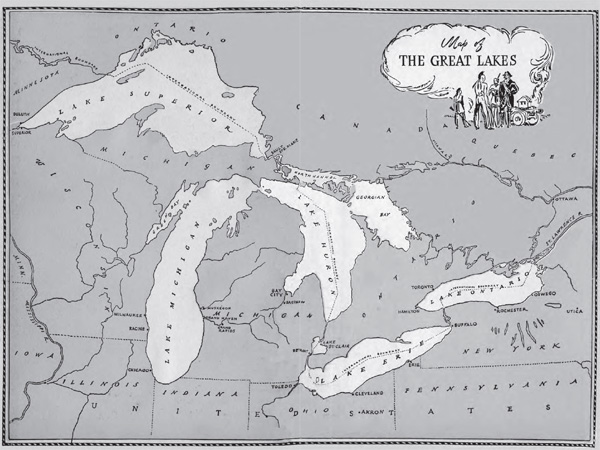
Introduction
I first got the idea for this book over fifteen years ago. I was living in San Francisco, interning for Mother Jones magazine, but Id left my heart on the Great Lakes. One day I was browsing in the City Lights bookstore when I came across North Star Country, by Meridel LeSueur. It was a history of the Upper Midwest, told through the stories of common people. Not long after, a book called The Encyclopedia of Southern Culture appeared in the magazines office. As I paged through it, I wondered, Why doesnt someone write an encyclopedia of Northern culture? A book about hockey, and deer hunting, and paczki, the lardy doughnuts served in Polish bakeries the day before Lent. That summer I moved back to Michigan and tried to do it myself. I didnt get very far. I think I finished a chapter about ice fishing, and that was it.
In 2004, I decided to try again, because I was getting the feeling that the South was taking over the country. Wal-Mart was invading the city of Chicago, NASCAR had displaced hockey as Americas fourth sport, and we hadnt had a genuine Northern president since Gerald R. Ford. A newspaper columnist, commenting on the spread of the word yall, wrote, The North won the war, but is losing the peace. That was unacceptable. The pride that united Dixie into a nation-within-a-nation had to be countered with Northern pride.
The problem was that the North, as I saw it, is really divided between two countries: the United States and Canada. Growing up in Michigan, Id always felt more in common with the people across the water in Ontario than with the people in, say, Alabama, or New Mexico. The first concert I ever attended was Rush, at Joe Louis Arena, a hockey rink in Detroit, right across the river from Windsor, Ontario. So many strands of Northern culture came together that night, as Americans and Canadians grooved on arena rock.
The Great Lakes are the Norths most remarkable natural feature. In fact, theyre one of the most remarkable natural features in the world. Only the polar ice caps hold more freshwater. Drained, they would cover the continental United States to a depth of nine-and-a-half feet. They generate their own weather, cooling the summers and sealing their port cities in snow each winter. Because theyre as deep and broad as seas, they allow saltwater ships to sail a third of the way across North America. Since they contain a fifth of the worlds drinking water, theyd be much harder to live without than the Himalayas, or the Sahara Desert, or even the Amazon rainforest. They also comprise a nation within North America, as surely as the South. I call it the Freshwater Nation.
My circle tour around the Great Lakes provided the framework for this book. In June 2005, I loaded the trunk of my Dodge Neon with a borrowed tent and an assortment of camping equipment: a backpack, a propane stove, an aluminum pot, heavy boots, an air mattress. I threw a bag of clothes on the backseat, and hung a safari blazer in the window, in case I had to meet anyone important. I had two cell phones, a sports watch, and a box of granola bars. There was a Great Lakes library on the floorErnest Hemingway and Francis Parkman made good campsite reading. I had sublet my apartment, and sent my dog to spend the summer with a friend in the suburbs. I had just quit my newspaper job. It was a kinda-sorta job: I never had to go into the office, and I was getting tired of working out of an empty house. Anyway, I had never considered myself the employee type.
Next page
